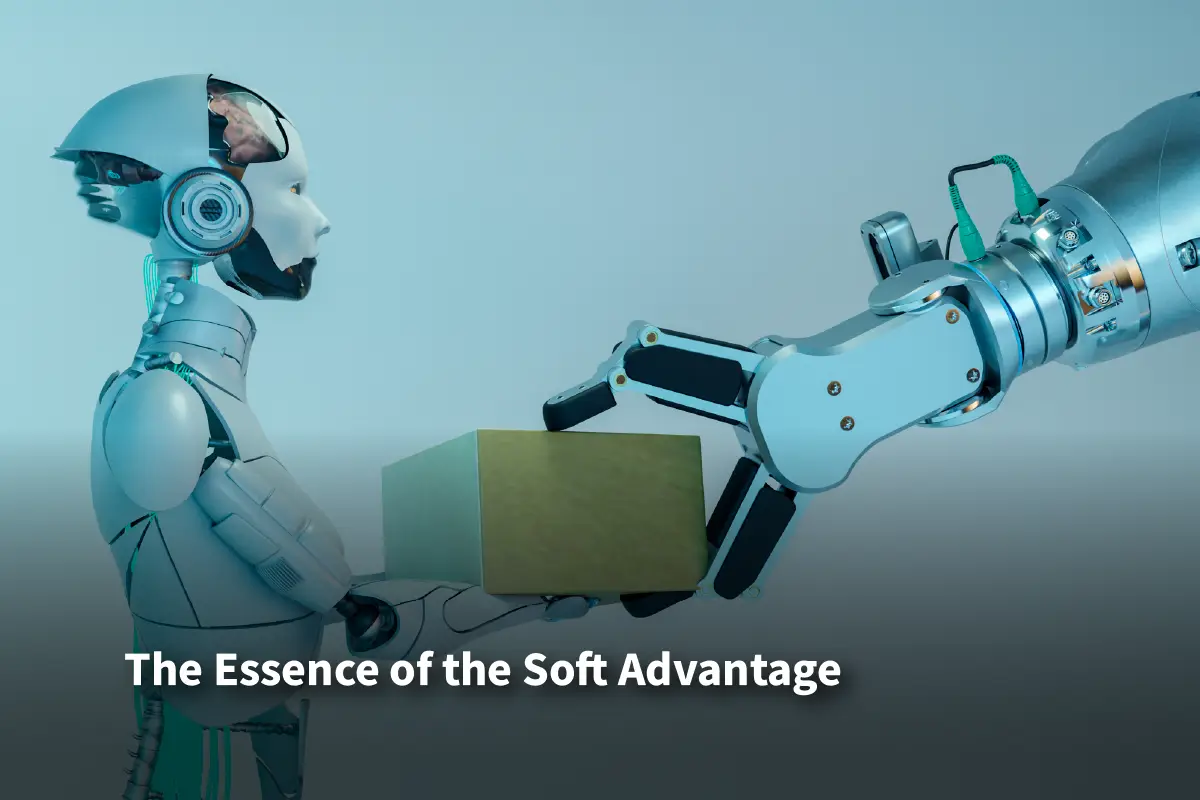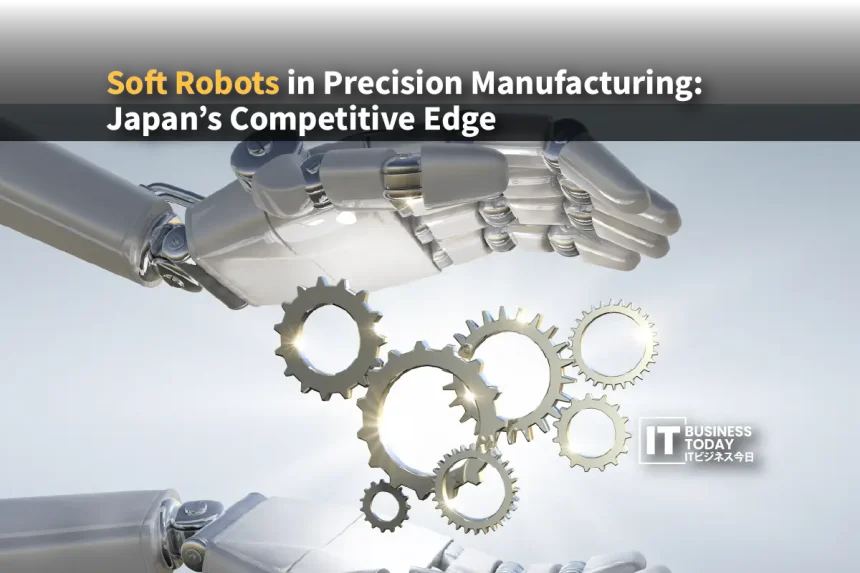For decades, Japan dominated precision manufacturing with unmatched expertise. Its drive for perfection shows in monozukuri, the craft of making things, and kaizen, which means continuous improvement. This drive pushed industries to new highs. It changed electronics, optics, and car parts. Now, however, global competition surges and supply chains adapt. A critical shortage of skilled workers threatens the industry. But within Japan’s research labs and factories, a stealthy revolution unfolds. Here, innovation merges with agile, intelligent materials, a radical departure from inflexible steel.
Soft robotics is not just a new technology. It is becoming a key part of Japan’s edge in precision manufacturing. This isn’t about replacing old strengths. It’s about adding new, powerful abilities.
Why Japan Needs This Edge Now
The pressures facing Japanese manufacturing are multifaceted and undeniable. An aging population leads to fewer skilled workers. According to Japan’s Ministry of Internal Affairs and Communications, over 29% of Japan’s population is over 65, the highest globally. These workers are needed for complex assembly tasks. They need years of practice and skill. Consumer and industrial demand now seeks highly customized, miniaturized, and complex products.
Also Read: The Dark Side of LLMs: How Generative AI Is Fueling Sophisticated Social Engineering
This includes:
- New micro-LED displays
- Advanced semiconductor packaging
- Custom medical devices
- Complex biotech parts
Traditional rigid robots excel in fast, repetitive tasks in controlled settings. However, they struggle with variability, delicate materials, and unstructured spaces. Fragile components can get damaged easily. Precision fixturing is costly. Also, there are limits to adaptability. These issues create bottlenecks. Japan needs a new tool for its manufacturing. It should have the gentle, adaptable touch of a master craftsperson. At the same time, it must work tirelessly with digital precision. Enter soft robotics.
The Essence of the Soft Advantage

Soft robotics fundamentally reimagines how machines interact with the physical world. These systems use flexible materials like elastomers, polymers, textiles, and even fluids. They often use air pressure, hydraulic fluids, or smart materials. These materials react to electricity or temperature changes. This inherent flexibility is transformative for precision manufacturing:
- Gentle Mastery: Soft grippers and manipulators shape themselves to delicate or odd objects. This includes items like micro-lenses, biological samples, and fragile ceramics. They do this without causing harmful pressure points. They handle variability as a feature, not a flaw.
- Intrinsic Safety: Working safely alongside human operators becomes far more feasible. A soft robot arm is safer than a rigid one. It allows for closer human-robot collaboration (HRC) on complex tasks.
- Adaptive Dexterity: Soft robots mimic biological structures, like octopus tentacles and human fingers. They can handle complex tasks in tight spaces or on uneven surfaces. For example, they can thread wires in devices. They can also polish intricate curves. Traditional robots find these tasks hard.
- Tactile Intelligence: These robots can ‘feel’ force, pressure, slippage, and texture clearly. They achieve this by adding advanced sensor arrays to soft materials. This real-time feedback allows for closed-loop control. It helps with precise handling and assembly. The system adjusts grip and force instantly. Recent developments show tactile sensors can detect pressures as low as 0.01 kPa, making them ideal for micro-manufacturing.
Japan’s Unique Convergence
Japan stands out in soft robotics. Several key factors boost its transition from research to industry.
- Deep Materials Science Knowledge: We have years of experience in polymer chemistry and advanced textiles from Toray Industries. This gives us a strong foundation in composite materials. Japanese companies excel at creating strong, responsive materials. These materials are also integrated with sensors; which soft robots rely on.
- Mechatronics Mastery: Japan excels at blending mechanics, electronics, and control systems. This skill has been built over decades of making top industrial robots like Fanuc, Yaskawa, and Epson. It’s a strength that can be applied in many areas. It uses skills to create advanced control systems, micro-valves, and sensors for soft actuators. Japan remained the second largest global market for industrial robots, behind China. Robot installations reached 46,106 units in 2023.
- Manufacturing Culture of Precision: Monozukuri emphasizes quality, miniaturization, and process optimization. This mindset is key to success. Japanese engineers know the benefits of soft robotics in complex manufacturing. They also have the skills to apply it effectively.
- Japan faces a big demographic challenge: This creates a strong need for automation. The automation must manage delicate tasks done by an aging workforce. This isn’t theoretical; it’s an operational necessity driving rapid adoption.
- Strategic Investment & Collaboration: Japan understands the importance of investment in soft robotics. Organizations like NEDO and METI provide funding for research and development. They promote teamwork among various groups. This includes universities like the University of Tokyo and Waseda University. It also involves big companies such as Toyota, Omron, and Bridgestone. Also, nimble startups like SQUSE are in this collaboration. They are working on soft gripper technology.
Japanese Soft Robotics in Action
The theoretical advantages are compelling, but Japan is already demonstrating tangible, high-impact applications:
- Electronics & Semiconductor Assembly:
- Handle delicate wafers carefully.
- Place micro-components precisely.
- Connect ultra-fine wires without causing micro-fractures.
Soft grippers with embedded tactile sensors ensure perfect placement force. Companies like Sony and Murata Manufacturing explore these solutions for next-gen devices.
- Pharma & Biotech: Working with lab-on-a-chip devices is crucial. Managing cell cultures and handling liquids in drug discovery are also important tasks. Here, sterility and gentleness matter most. Shimadzu Corporation and other precision instrument makers integrate soft elements.
- Advanced Optics: We polish unique, free-form lenses for cameras, endoscopes, and AR/VR headsets. This process avoids scratches and subsurface damage. Soft, conformal tools achieve superior surface finishes. HOYA Corporation and Nikon leverage such capabilities.
- Food Processing (High-End): Handle delicate fruits and pastries carefully. Automate complex packaging for gourmet products where presentation matters. Japanese food tech companies deploy soft systems for premium export lines.
- Medical Device Manufacturing: Assembling tiny, complex implantable devices is key. We also handle super-elastic materials like Nitinol for stents. This ensures precision, lowers rejection rates, and boosts quality.
The Competitive Imperative
For Japanese business leaders, soft robotics isn’t just a future trend. It’s essential for maintaining and expanding their global advantage in precision manufacturing. Here’s the imperative:
- Solve the Labor Paradox: Tackle the skilled labor shortage head-on. Ensure we maintain quality and can still make complex, custom products right here at home.
- Unlock New Product Frontiers: Make products that were once impossible. These can be smaller, more complex, and more organic. This will open new markets and premium segments.
- Improve Quality & Yield: Handle delicate parts carefully to reduce damage. This cuts scrap rates and enhances product quality and consistency.
- Increase Flexibility & Responsiveness: Reduce changeover times between product variants. Soft tooling is usually easier and quicker to change than hard tooling for rigid robots.
- Future-Proof Operations: Place your manufacturing base at the leading edge of the next industrial shift. This will help you attract top talent and valuable partnerships.
Forging the Path Forward

Embracing soft robotics requires more than just purchasing new equipment. It demands a strategic approach:
- Identify High-Impact Use Cases: Conduct a thorough audit of your production lines.
- Identify processes that need careful handling.
- Look for those with a lot of variability.
- Focus on tasks that require strong manual skills.
- Note any processes with high damage rates.
These are prime candidates.
- Foster Cross-Functional Collaboration: Break down silos. Engage R&D, production engineering, materials science, and operations teams early. Success hinges on integrating soft systems holistically.
- Partner Strategically: Leverage Japan’s ecosystem. Collaborate with leading universities on applied research. Engage with specialized robotics integrators who understand soft systems. Partner with materials suppliers innovating in compliant, sensor-rich substrates. Explore startups pushing boundaries.
- Invest in Skills Development: Upskill your engineering and maintenance teams. Soft robotics uses special principles like pneumatics and hydraulics on new scales. It also focuses on material behavior and advanced tactile sensing integration. Build internal expertise.
- Start with Pilots, Scale with Confidence: Begin small pilot projects on key, manageable processes. Demonstrate ROI, build organizational confidence, and refine implementation strategies before wider deployment.
Success is measured by:
-
- Less scrap
- More throughput
- Better quality metrics
- Savings or redeployment in labor costs
- Highlight the ‘Made in Japan’ Edge: Show how your soft robotics reflect Japan’s commitment to monozukuri. This approach combines tradition with bold innovation, resulting in unmatched quality and precision. Market this capability globally.
The Compliant Future is Now
The hum of precision manufacturing in Japan is gaining a new, softer timbre. Soft robotics is more than just a new tech trend. It holds the key to Japan’s next wave of industrial strength. Soft robots tap into our strengths in materials science and mechatronics. They also reflect the spirit of monozukuri. This helps address demographic challenges. They also offer new levels of precision, flexibility, and gentle automation. Japan’s competitive edge comes from building on its strengths. It evolves rather than opposes its past. Business leaders must act. They should see the power of compliant machines. Next, integrate these machines into high-value manufacturing processes. Also, help shape this quiet revolution. The future of precision isn’t just for the strong. It’s for the adaptable, the sensitive, and the smart. Japan, with its soft robotics, is ready to lead once more. The time for exploration is over; the time for strategic implementation is now. Will your company be at the forefront of this defining shift?







